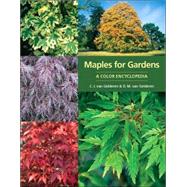
| Preface | 7 | (2) | |||
|
9 | (2) | |||
|
11 | (4) | |||
|
12 | (1) | |||
|
12 | (1) | |||
|
13 | (1) | |||
|
13 | (1) | |||
|
13 | (2) | |||
|
15 | (8) | |||
|
16 | (3) | |||
|
19 | (1) | |||
|
19 | (4) | |||
|
23 | (4) | |||
|
24 | (1) | |||
|
24 | (1) | |||
|
24 | (1) | |||
|
25 | (2) | |||
|
27 | (240) | |||
|
27 | (1) | |||
|
28 | (1) | |||
|
28 | (239) | |||
| Appendix 1 Where to See Maples | 267 | (2) | |||
| Appendix 2 Maples for Particular Purposes | 269 | (4) | |||
| Appendix 3 Hardiness Zone Maps | 273 | (2) | |||
| Glossary | 275 | (1) | |||
| For Further Information on Maples | 276 | (1) | |||
| Index of Maples by Scientific Name | 277 | (9) | |||
| Index of Maples by Common or Cultivar Name | 286 |
The New copy of this book will include any supplemental materials advertised. Please check the title of the book to determine if it should include any access cards, study guides, lab manuals, CDs, etc.
The Used, Rental and eBook copies of this book are not guaranteed to include any supplemental materials. Typically, only the book itself is included. This is true even if the title states it includes any access cards, study guides, lab manuals, CDs, etc.